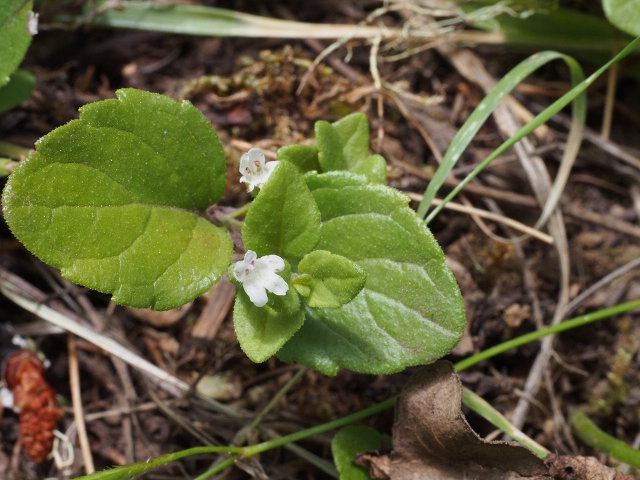Yerba Buena (Satureja douglasii)
Published at 16:39 on 23 June 2018


This is not exactly a showy flower; in fact, I believe this is the first time I’ve noticed it in bloom. There are two small purple dots on each bloom which only showed up in the second of the two photos I took.
Here in western Washington, it tends to grow in drier woods. This plant is a member of the Mint Family (Lamiaceae, or if you prefer the classic old family names, Labiatae).
The common name of this plant comes from the Spanish for “good herb,” and was bestowed upon it by the Spanish colonists of California. It was so abundant in the area around what is now San Francisco that this plant was the source of the original name of that city.
The Spanish called it so because of its aroma, which is a mix of minty and savory. A tasty herbal tea can be brewed from its leaves; however, on Bainbridge Island it is probably best to let it be. That’s both because we don’t have very much of it, and because the south-facing coastal bluffs which it favors are also the favored environment of Poison-Oak (Toxicodendron diversilobum).
I use the scientific name Satureja douglasii here because that is the name this plant has historically been known by. Genetic sequencing has thrown the nomenclature of many plants into disarray, and this is one of them. This species was first renamed Micromeria douglasii; now some taxonomists are insisting that the correct name should instead be Clinopodium douglasii.
Until the “gene jockeys” settle their arguments, I plan to stick with the traditional name for this plant (as well as other ones in the same situation). The purpose of a name is to facilitate communication, and names that keep changing tend to by contrast frustrate communication.
